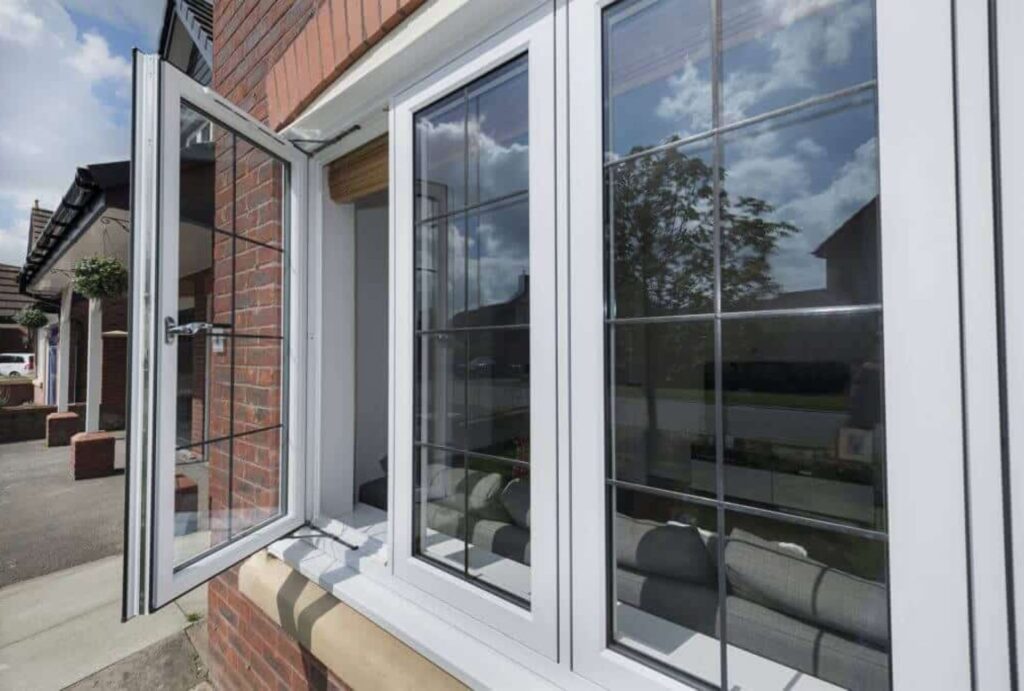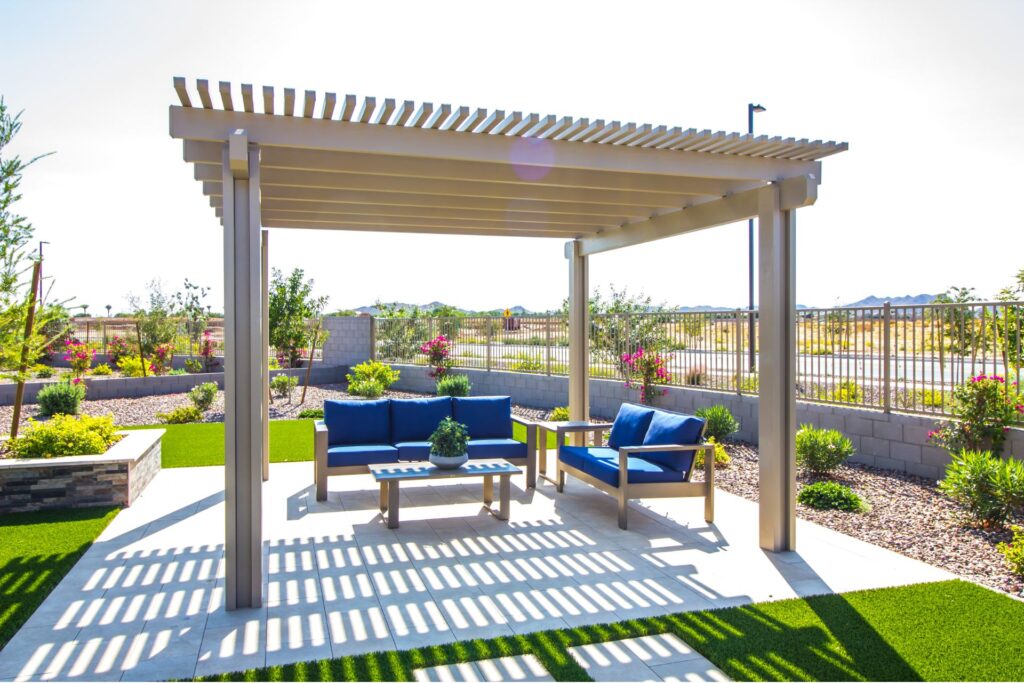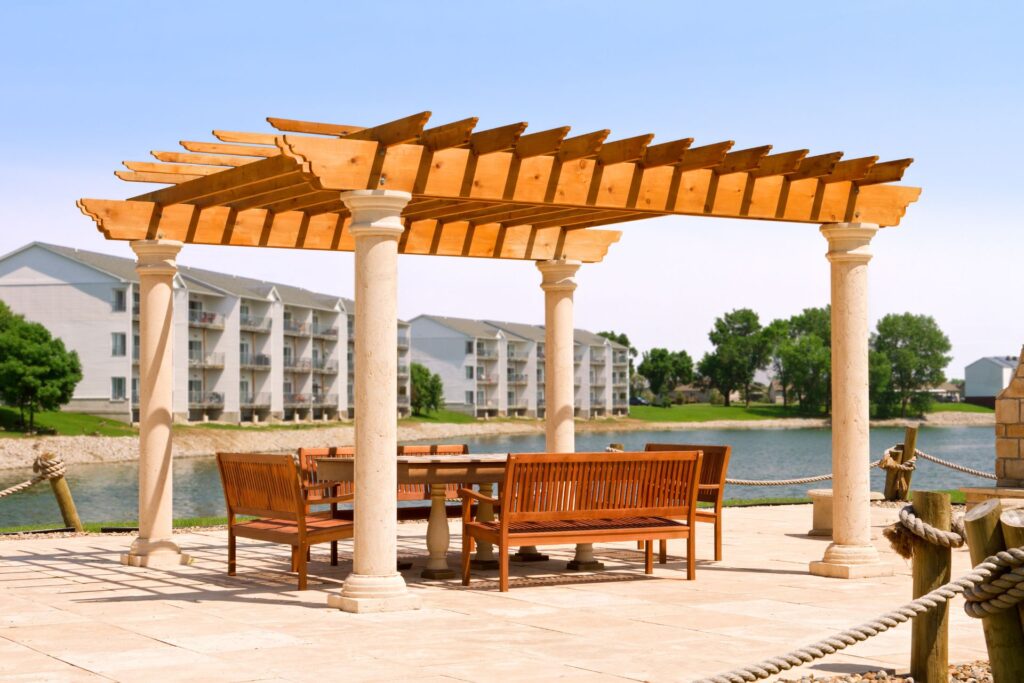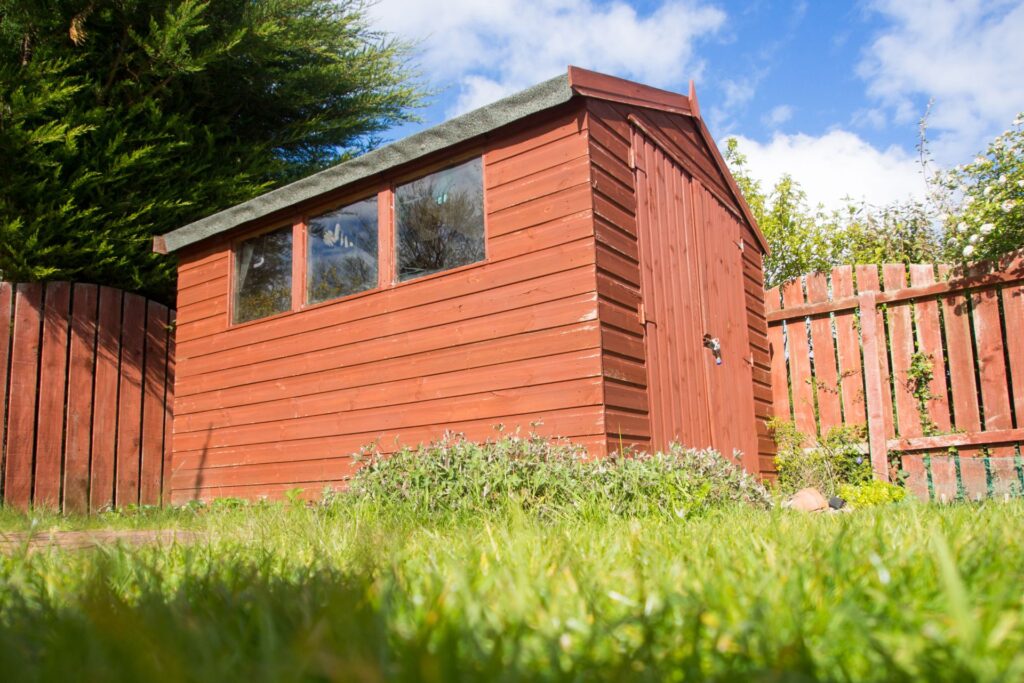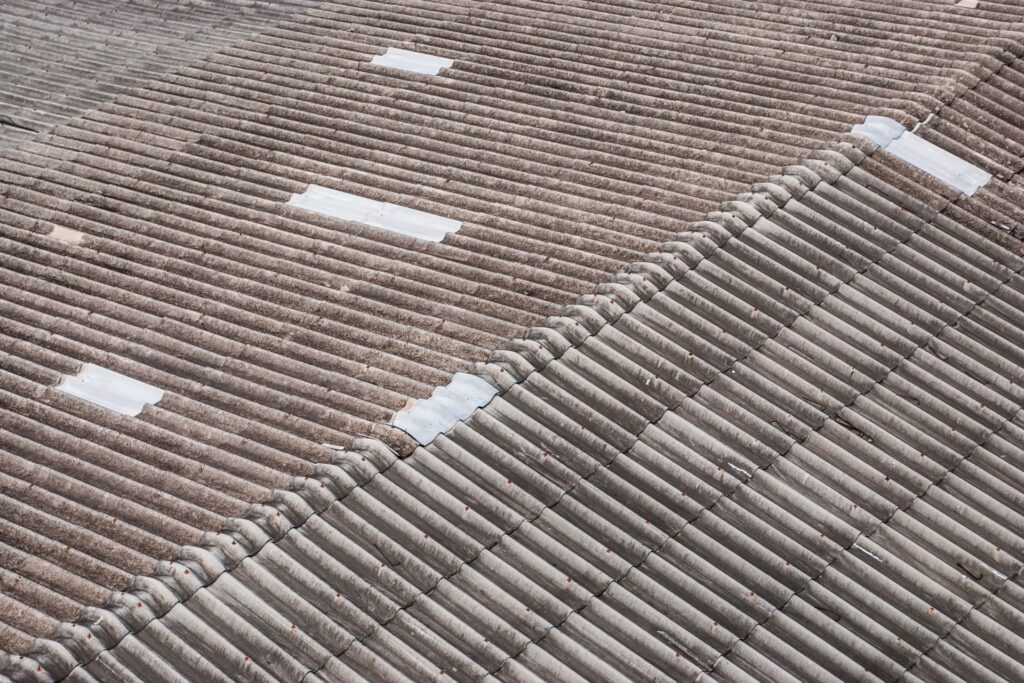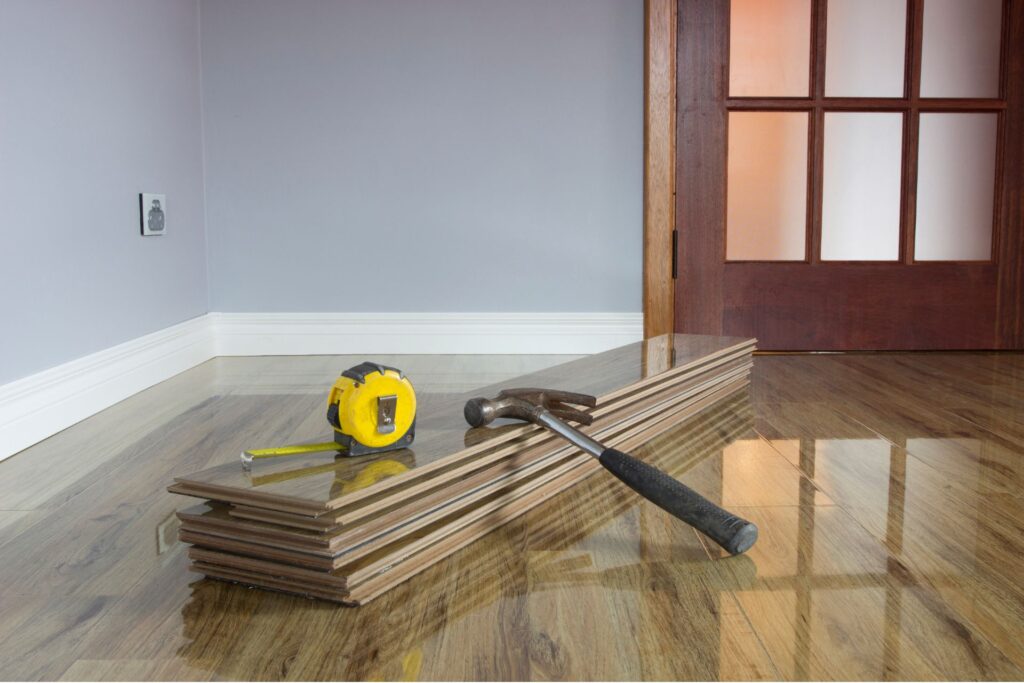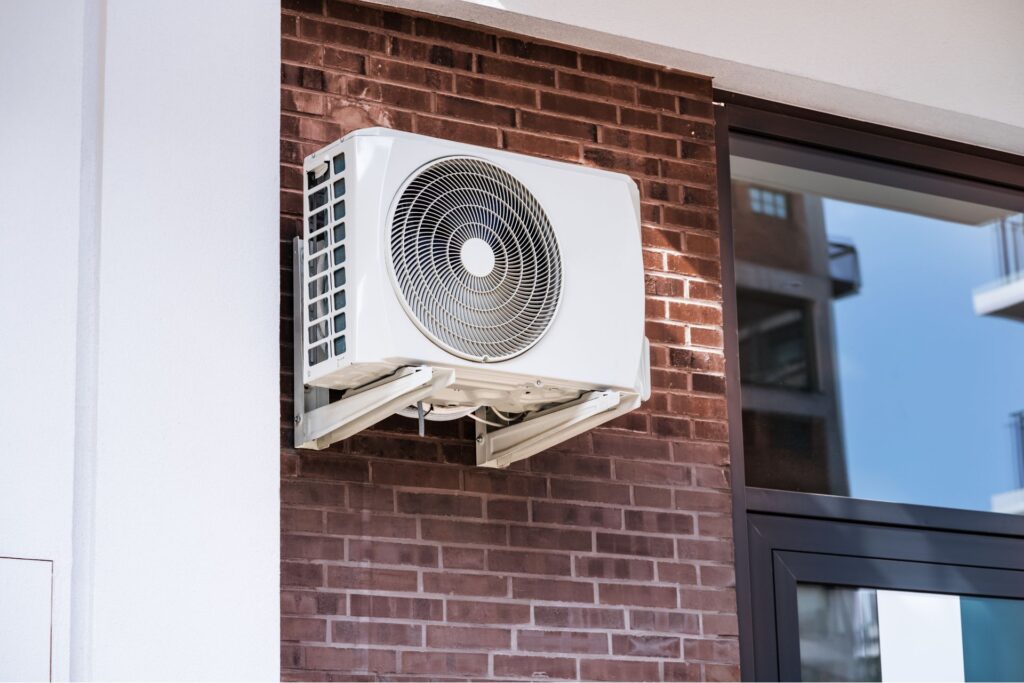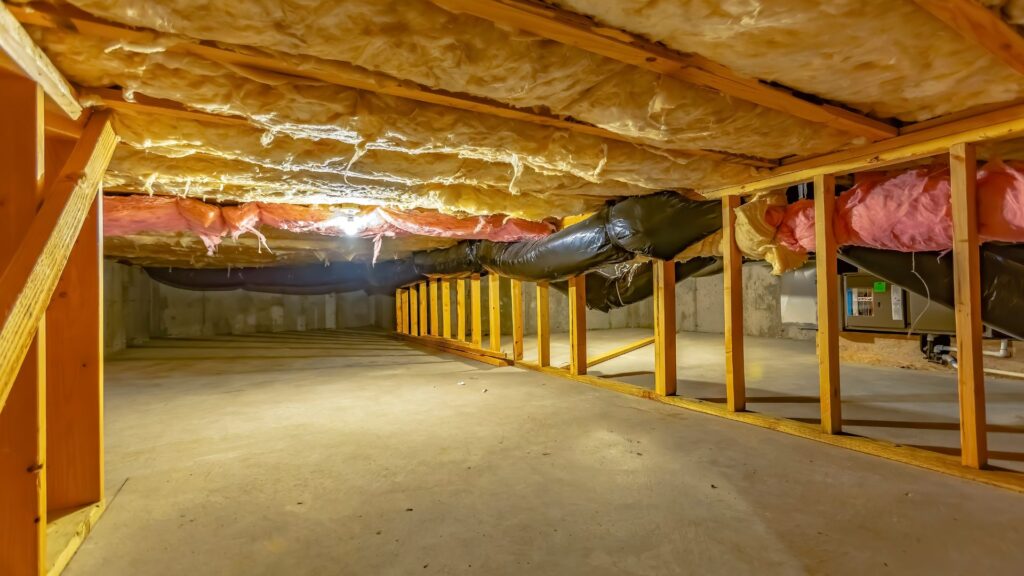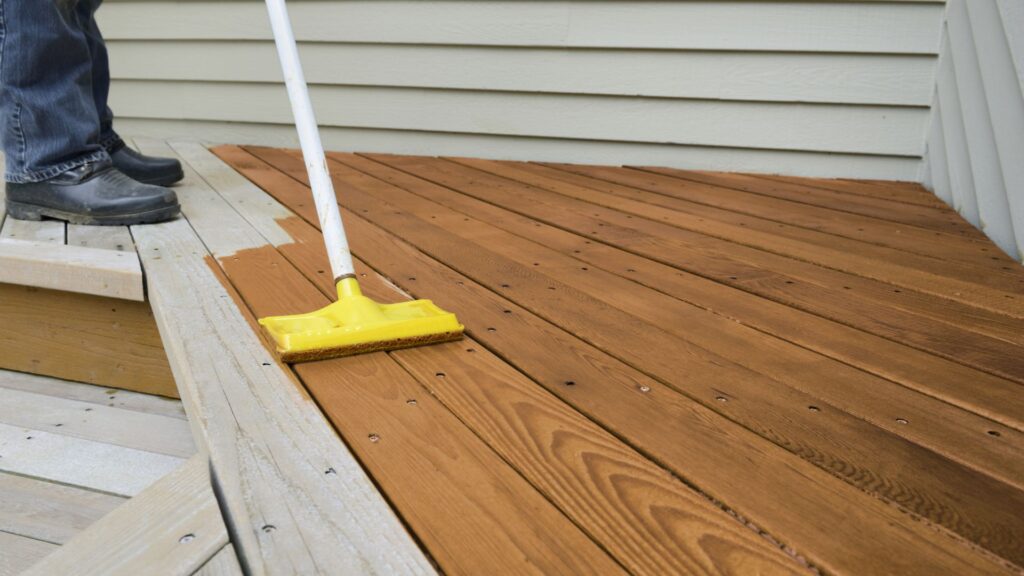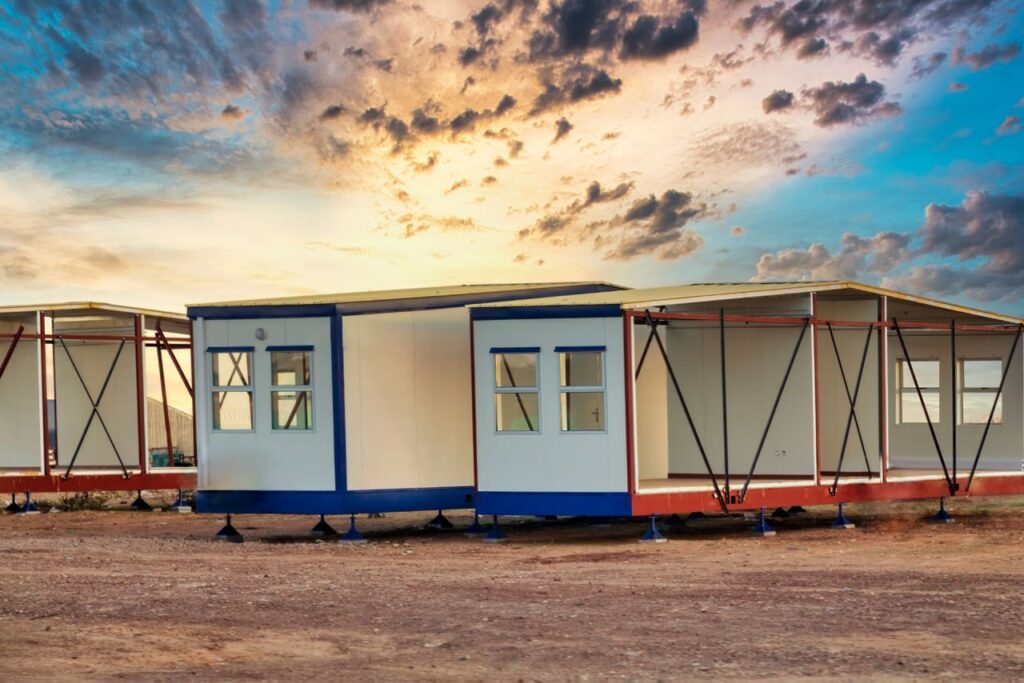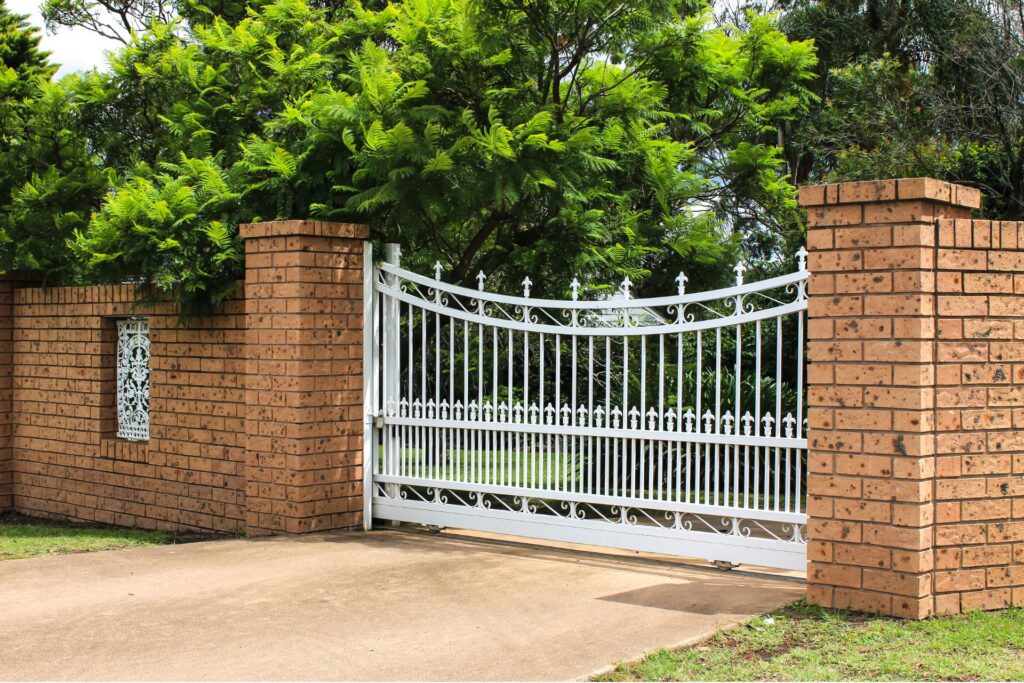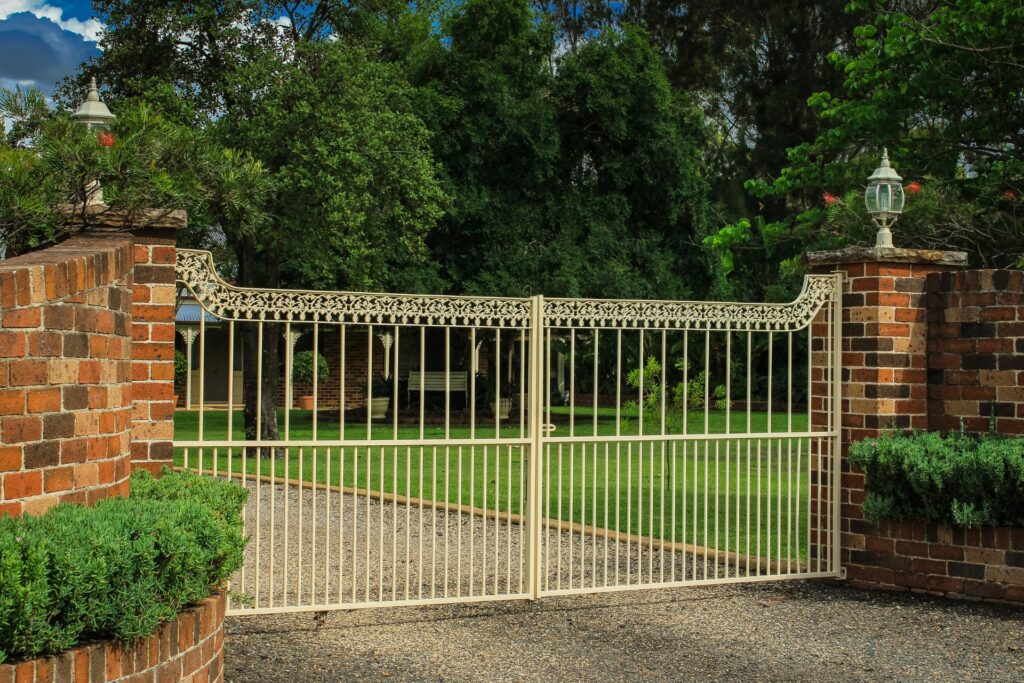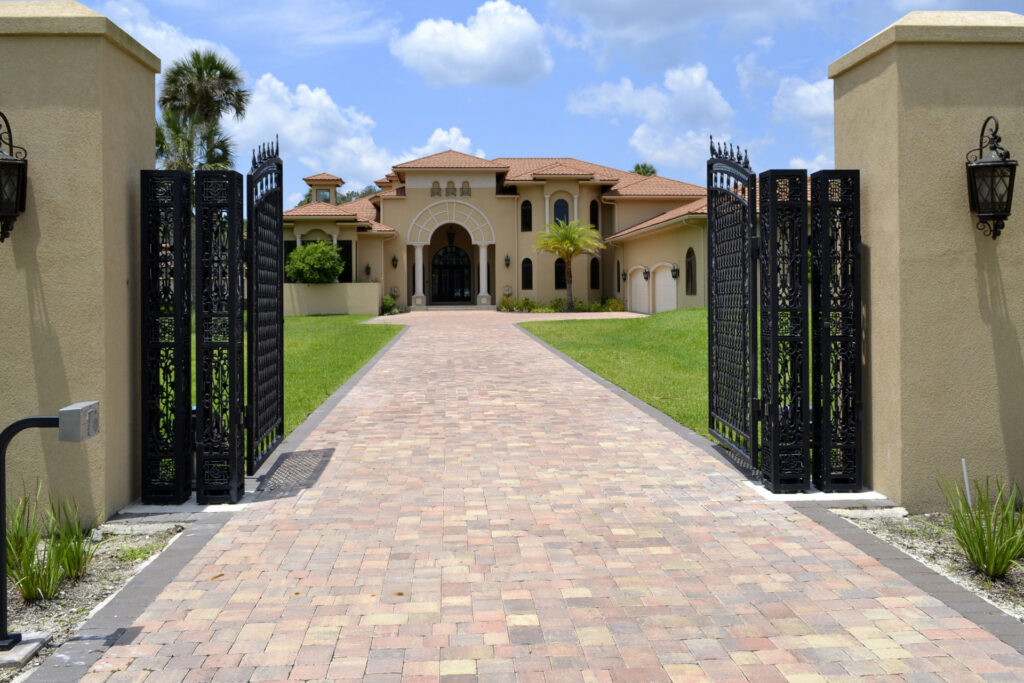Welcome to our in-depth guide on retrofit double glazing in New Zealand—a popular solution for improving home insulation, reducing noise, and cutting down on energy bills. If you’re wondering whether retrofit double glazing is worth the investment, you’re not alone. With NZ’s chilly winters, humid climate, and rising power costs, many homeowners are looking for ways to make their homes warmer, quieter, and more energy-efficient without the hefty price tag of full window replacements. In this article, we’ll break down everything you need to know—how it works, the real benefits, costs, and whether it’s the right choice for your home—so you can make an informed decision.
Retrofit double glazing is worth it in NZ for homeowners looking to improve insulation, reduce energy costs, and minimize noise without replacing entire window frames. It enhances thermal efficiency, lowers condensation, and increases home value, making it a cost-effective upgrade for New Zealand’s varying climate. While the upfront investment depends on window size and materials, many homeowners see long-term savings on heating and cooling bills.
- What Is Retrofit Double Glazing?
- Why Is Double Glazing Important In NZ Homes?
- Benefits Of Retrofit Double Glazing
- Costs & Considerations Of Retrofit Double Glazing In NZ
- Real-Life Experiences: Is Retrofit Double Glazing Worth It?
- How To Choose The Right Retrofit Double Glazing Provider In NZ
- FAQs: About Is Retrofit Double Glazing Worth It In NZ
- Conclusion
- Find A Professional Window Company Near You!
What Is Retrofit Double Glazing?
If you’ve ever struggled with cold drafts, condensation, or high power bills, you may have come across the term retrofit double glazing as a potential solution. But what exactly does it mean, and how does it compare to installing brand-new double-glazed windows? Let’s break it down.
Understanding Retrofit Double Glazing
Retrofit double glazing refers to the process of installing double-glazed glass into your existing window frames, rather than completely replacing the entire window unit. This method allows homeowners to upgrade their windows for better insulation and energy efficiency without the expense or hassle of a full replacement.
In simple terms, instead of removing and replacing the entire window, a professional will carefully remove the old single-glazed glass and install a double-glazed unit into the same frame. The new glass typically consists of two panes separated by an air or gas-filled space, creating a thermal barrier that improves insulation, noise reduction, and condensation control.
Retrofit Double Glazing Vs. New Double-Glazed Windows
A common question many homeowners ask is: Should I retrofit my windows or install brand-new double-glazed windows? The answer depends on several factors, including your budget, the condition of your existing window frames, and your home’s specific needs.
Retrofit double glazing is generally more affordable because it reuses existing frames, making it a great option for homeowners looking for cost-effective insulation upgrades. It is also quicker to install and causes minimal disruption to your home.
On the other hand, brand-new double-glazed windows offer the highest level of energy efficiency and modern designs, but they come at a higher cost and require a longer installation process. If your current frames are in good condition, retrofitting is a practical and efficient solution. However, if your frames are old, rotting, or structurally weak, a full window replacement may be the better long-term investment.
Common Materials Used for Retrofit Double Glazing
The material of your existing window frames plays a crucial role in determining how well a retrofit installation will work. The three most common materials in New Zealand homes are.
- Aluminium: Popular for its durability, low maintenance, and modern look. However, aluminium is a good conductor of heat, meaning it can still allow some heat loss unless thermal break technology is used.
- Timber: A classic, high-quality choice that offers excellent natural insulation. However, timber requires regular maintenance to prevent warping or rot, especially in humid areas.
- uPVC (Unplasticized Polyvinyl Chloride): Known for being energy-efficient, low-maintenance, and cost-effective. uPVC provides superior thermal insulation, making it a great choice for homeowners prioritizing energy savings and noise reduction.
Each material has its own strengths, and the best choice depends on your home’s existing window frames and personal preferences.
Retrofit double glazing is a smart investment for NZ homeowners looking to enhance home comfort, improve energy efficiency, and reduce noise without the high costs of full window replacement. By understanding the difference between retrofit and new double-glazed windows, as well as the materials involved, you can make an informed decision that best suits your home and budget.
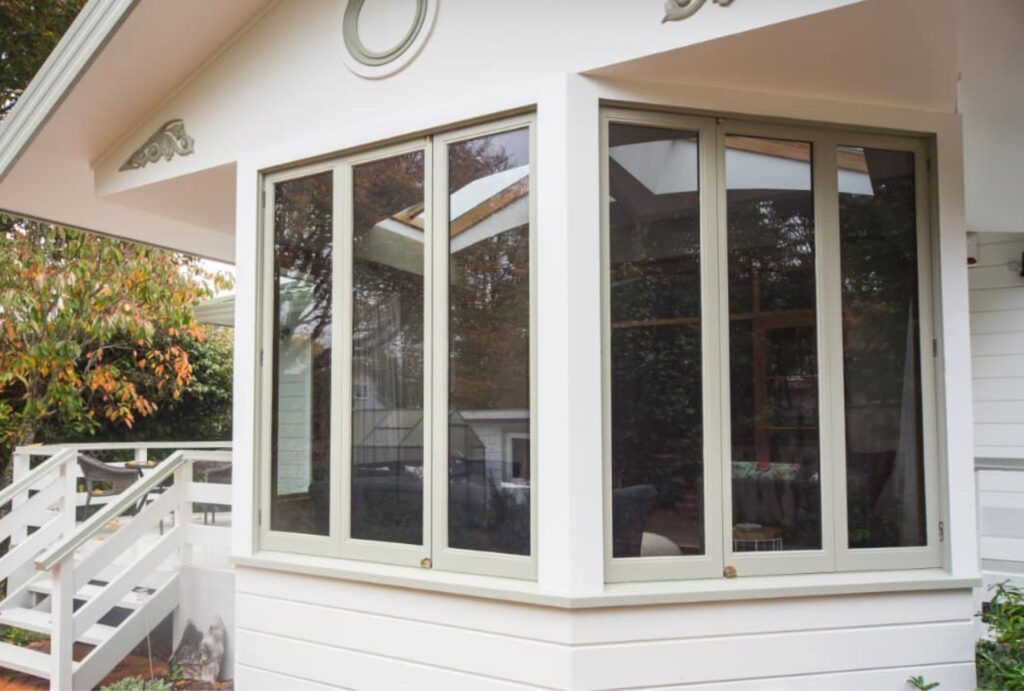
Why Is Double Glazing Important In NZ Homes?
New Zealand’s climate presents unique challenges for homeowners, with cold winters, hot summers, and high humidity affecting indoor comfort and energy efficiency. Many older homes in NZ still have single-glazed windows, which struggle to provide proper insulation, leading to heat loss, condensation issues, and noise disturbances. This is where double glazing comes in, offering a practical solution to enhance warmth, reduce energy costs, and create a more comfortable living environment.
New Zealand’s Climate: A Homeowner’s Challenge
New Zealand’s weather conditions vary widely across the country, but no matter where you live, your home must withstand significant temperature fluctuations.
- Cold Winters: Many regions, especially in the South Island and elevated areas, experience frosty mornings and sub-zero temperatures in winter. Single-glazed windows allow heat to escape easily, making homes harder to warm and increasing heating costs.
- Hot Summers: In contrast, summers can be uncomfortably hot, especially in regions like Auckland and Northland, where humid conditions make homes feel stuffy and overheated.
- High Humidity & Condensation: The combination of high humidity levels and single-glazed windows leads to excessive condensation, which can encourage mold growth, wood rot, and dampness, posing risks to both health and home durability.
Problems With Single-Glazed Windows
Older homes in NZ were often built with single-pane windows, which offer little insulation and create multiple issues.
1. Significant Heat Loss In Winter
Single-glazed windows lack thermal insulation, allowing indoor heat to escape quickly. According to EECA (Energy Efficiency and Conservation Authority), up to 40% of a home’s heat loss occurs through windows, making it difficult and expensive to keep homes warm in winter.
2. Condensation & Moisture Build-Up
When warm indoor air meets the cold surface of single-glazed windows, condensation forms. Over time, this excess moisture can lead to mold, mildew, and timber frame deterioration, which can negatively impact indoor air quality and structural integrity.
3. Increased Energy Bills
With heat escaping so easily in winter and homes trapping excessive warmth in summer, homeowners often rely on heaters, heat pumps, and air conditioning, leading to higher power bills. Single-glazed windows contribute to this inefficiency by failing to regulate indoor temperatures effectively.
4. Noise Disturbance
For those living in busy urban areas, near roads, or close to airports, single-glazed windows provide little to no sound insulation. This can lead to constant noise pollution, disrupting sleep and overall comfort.
How Double Glazing Improves Insulation, Energy Efficiency, And Comfort
Upgrading to double-glazed windows is one of the best ways to combat these issues, making homes warmer, drier, quieter, and more energy-efficient.
1. Better Insulation & Temperature Control
Double glazing consists of two panes of glass separated by an air or gas-filled gap, which acts as a thermal barrier. This reduces heat loss in winter and prevents excessive heat from entering during summer, maintaining a comfortable indoor temperature year-round.
2. Energy Efficiency & Lower Power Bills
Because double glazing helps regulate indoor temperatures naturally, it reduces the need for excessive heating and cooling, leading to lower electricity bills. Many homeowners in NZ find that double glazing pays for itself over time through energy savings.
3. Condensation Reduction For A Healthier Home
By keeping the inner glass pane closer to room temperature, double glazing significantly reduces condensation buildup, preventing mold growth and damp issues. This is especially beneficial for homes in high-humidity areas like Wellington, Auckland, and coastal towns.
4. Noise Reduction For A Quieter Home
Double-glazed windows act as a sound barrier, helping to reduce external noise from traffic, neighbors, or other disruptions. This creates a more peaceful and restful home environment, particularly in high-traffic areas.
For homeowners looking to improve comfort, reduce energy costs, and enhance home value, double glazing is a worthwhile investment. Whether you’re dealing with cold winters, humid summers, high power bills, or noise pollution, upgrading your windows to double glazing provides long-term benefits that make your home warmer, healthier, and more cost-efficient.
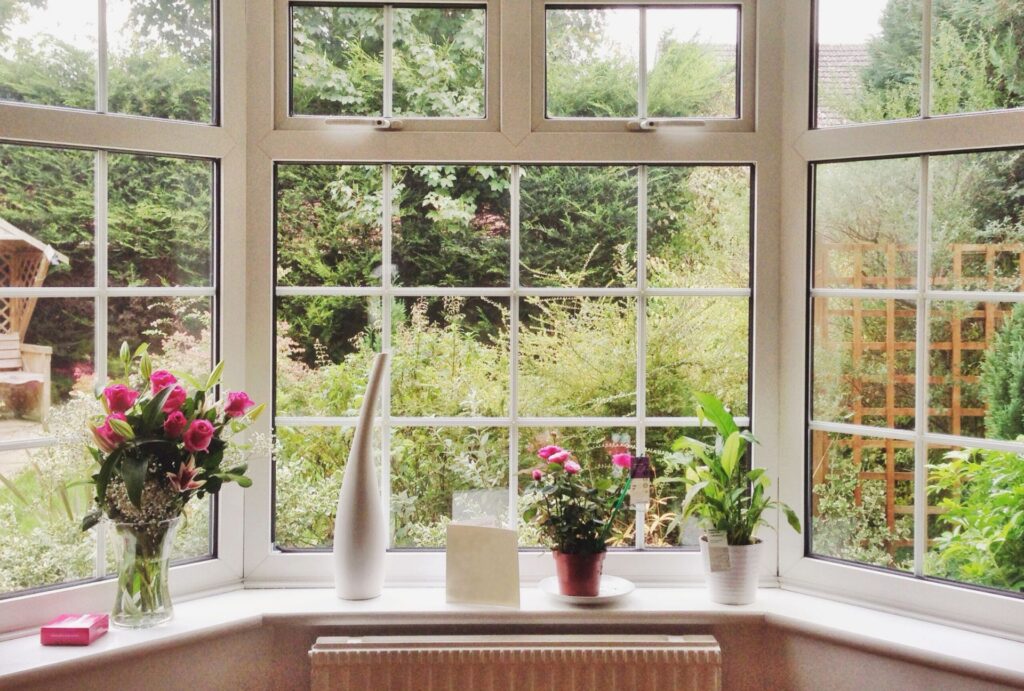
Benefits Of Retrofit Double Glazing
If you’re considering retrofit double glazing for your home, you’re probably wondering whether it’s worth the investment. The good news? It comes with a range of benefits that improve your home’s comfort, efficiency, and long-term value. From reducing heat loss to lowering energy bills, retrofit double glazing is a smart upgrade for New Zealand homes. Let’s take a closer look at how it works and why so many homeowners are making the switch.
Better Thermal Insulation & Energy Savings
One of the biggest advantages of retrofit double glazing is its superior thermal insulation. Standard single-pane windows allow a significant amount of heat to escape during winter and let excess warmth in during summer. This results in higher energy bills as your heating and cooling systems work overtime to maintain a comfortable indoor temperature.
With double glazing, an insulating layer of air or gas is sealed between two panes of glass, reducing heat transfer. This means your home stays warmer in winter and cooler in summer, creating a more stable indoor climate year-round.
How Much Can You Save on Energy Bills?
Studies in New Zealand have shown that upgrading to double glazing can reduce heat loss by up to 50%, leading to a noticeable drop in energy consumption. Homeowners often see a 10-20% reduction in heating and cooling costs, making retrofit double glazing a long-term cost-effective solution.
If you’re tired of high power bills, installing retrofit double glazing can make a big difference while keeping your home more comfortable and energy-efficient.
Noise Reduction
If you live in a busy city, near a main road, or in a high-traffic area, noise pollution can be a major issue. Retrofit double glazing helps block out external sounds, making your home quieter and more peaceful.
Unlike single-glazed windows, double glazing absorbs and dampens sound vibrations, preventing unwanted noise from entering your living space. This is especially beneficial for homes near.
- Busy roads and highways: Cuts down on traffic noise, making indoor spaces quieter.
- Urban neighborhoods: Reduces noise from pedestrians, cafes, and businesses.
- Construction zones: Helps minimize disturbances from building projects.
- Noisy neighbors: Provides better soundproofing from surrounding homes.
If you’re looking for a more serene living environment, retrofitting your windows with double glazing can make a noticeable difference, helping you enjoy peace and quiet inside your home.
Reduced Condensation & Moisture Control
Condensation is a common issue in many New Zealand homes, particularly during the colder months. It occurs when warm indoor air meets cold single-pane windows, leading to moisture buildup. Over time, this can cause mold growth, dampness, and even wood rot, which can damage window frames and affect indoor air quality.
Retrofit double glazing significantly reduces condensation by maintaining a warmer interior glass surface. Since the inner pane is closer to room temperature, there’s less likelihood of moisture forming. This helps.
- Prevent mold and mildew: Protects your home and your health.
- Reduce dampness: Keeps your windows and walls dry.
- Extend the lifespan of window frames: Prevents rotting, especially in timber frames.
For homeowners dealing with constant condensation issues, double glazing provides a practical and lasting solution to protect your home from moisture-related problems.
Increased Home Value
If you’re planning to sell your home in the future, retrofit double glazing can boost its market value and make it more attractive to buyers. Many house hunters in New Zealand are actively looking for properties with energy-efficient features, and double glazing is high on their list.
How Does It Improve Your ROI?
- Better Energy Ratings: Homes with double glazing tend to have higher Energy Efficiency Ratings, making them more desirable to eco-conscious buyers.
- Modernized Windows Without Full Replacement: Retrofitting allows you to upgrade without altering the home’s character, which is especially important for heritage homes.
- Higher Asking Price: Real estate experts suggest that homes with energy-efficient upgrades often sell for higher prices and attract more competitive offers.
Even if you’re not planning to sell anytime soon, investing in retrofit double glazing increases your home’s long-term value, ensuring it stays warm, quiet, and energy-efficient for years to come.
Eco-Friendly Living
Sustainability is becoming a major consideration for homeowners in New Zealand, and retrofit double glazing offers a way to reduce your carbon footprint while improving home efficiency.
By lowering energy consumption, double glazing helps.
- Reduce greenhouse gas emissions: Less reliance on heating and cooling means a smaller carbon footprint.
- Enhance insulation naturally: Less need for energy-hungry appliances.
- Extend the lifespan of your windows: Retrofitting reuses existing frames, preventing unnecessary waste from full replacements.
For those looking to make their homes more sustainable, retrofit double glazing is an environmentally friendly choice that benefits both the planet and your wallet.
Retrofit double glazing offers a wide range of benefits for New Zealand homeowners, from energy savings and noise reduction to increasing home value and sustainability. Whether you want to cut down on power bills, enjoy a quieter home, or reduce condensation, upgrading your existing windows is a smart and cost-effective investment.
If you’re considering retrofit double glazing, the key is to choose a trusted provider that offers high-quality materials and expert installation. With the right choice, you’ll enjoy a warmer, more efficient, and comfortable home for years to come.
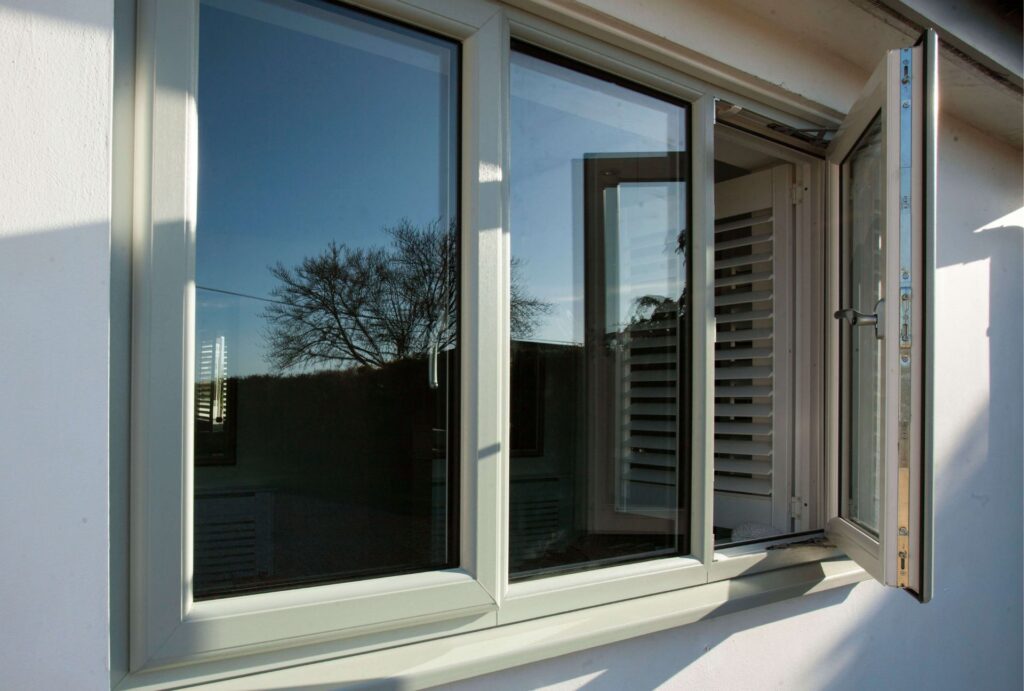
Costs & Considerations Of Retrofit Double Glazing In NZ
When considering retrofit double glazing for your home, understanding the costs and key factors involved is crucial. While this upgrade can improve insulation, reduce energy bills, and enhance comfort, it does require an initial investment. Below, we’ll break down the costs, compare it to full window replacements, and discuss any potential limitations to help you make an informed decision.
How Much Does It Cost?
The cost of retrofit double glazing in New Zealand varies depending on several factors, including the size and type of windows, frame material, and any additional features you choose.
Average Cost Per Window In NZ
On average, the price for retrofit double glazing ranges between $400 to $1,200 per window. Larger windows or those requiring specialized glass types will be on the higher end of this range.
Cost Per Square Meter
If measured by area, retrofit double glazing costs between $300 and $500 per square meter. The final price depends on the complexity of the installation and whether additional upgrades, such as noise-reducing or energy-efficient coatings, are included.
Factors Affecting The Cost
Several elements influence how much you’ll pay for retrofit double glazing.
- Window Size & Type: Larger or uniquely shaped windows will cost more due to the added labor and materials required. Bay windows, sliding doors, and skylights generally have higher pricing.
- Frame Material: The material of your existing window frames can impact the price.
- Timber Frames: May require additional preparation or reinforcement, increasing costs.
- Aluminium Frames: Usually easier to retrofit, making them slightly more affordable.
- Additional Coatings & Features: Optional enhancements that improve performance but add to the overall price.
- Low-E (Low Emissivity) Glass: Reduces heat loss, enhances energy efficiency, and can increase costs by 10–20%.
- Argon Gas Filling: Improves insulation by trapping heat between the glass panes, but comes at an extra charge.
- Laminated Glass: Ideal for noise reduction and security but costs more than standard double glazing.
While retrofit double glazing has a clear upfront cost, the long-term savings on energy bills can make it a financially smart decision for many New Zealand homeowners.
Is It Cheaper Than Replacing Windows?
One of the biggest reasons homeowners choose retrofit double glazing over a full window replacement is cost savings. But is it always the cheaper option? Let’s compare.
Cost Comparison: Retrofit vs. Full Window Replacement
- Retrofit Double Glazing: Costs 40–60% less than replacing entire windows since it utilizes existing frames.
- Full Window Replacement: Involves removing old frames and installing brand-new double-glazed windows, costing anywhere from $800 to $2,500 per window, depending on materials and style.
When Does A Full Replacement Make More Sense?
Although retrofit double glazing is generally more affordable, a full replacement may be necessary if.
- Your existing frames are damaged, rotten, or structurally weak, making them unsuitable for retrofitting.
- You want to upgrade to a completely different window style, such as switching from aluminium to timber.
- Your home has historical or heritage windows that require specialized restoration.
If your frames are still in good condition, retrofitting is a cost-effective and eco-friendly way to upgrade your home without the expense of full replacements.
Limitations & Potential Downsides
While retrofit double glazing offers numerous benefits, it’s important to be aware of some potential drawbacks.
1. Upfront Cost Can Be Significant
Although retrofitting is cheaper than full window replacement, the initial investment can still be high, especially for larger homes. The payback period in energy savings may take several years, depending on how much you spend on heating and cooling.
2. Not Suitable For All Window Types
Not all homes are compatible with retrofit double glazing, particularly if.
- The existing frames are too weak to support new double-glazed units.
- The windows are irregularly shaped or custom-built, requiring specialized glass that increases costs.
- Certain older window designs, particularly in heritage buildings, make retrofitting challenging.
3. Quality Varies Between Providers
The effectiveness of your retrofit double glazing depends largely on who installs it. Poor-quality installations can lead to seal failures, condensation issues, and subpar thermal performance. To avoid this.
- Choose a reputable company with positive customer reviews.
- Ensure they use high-quality glass and proper sealing techniques.
- Ask about warranties and guarantees to protect your investment.
For most NZ homeowners, retrofit double glazing is a worthwhile investment, offering better insulation, energy savings, and enhanced comfort. However, costs vary based on window type, frame material, and additional features. While cheaper than a full window replacement, it’s important to assess whether your existing frames are in good enough condition to support retrofitting.
By choosing a reliable provider and considering your home’s specific needs, you can enjoy the benefits of double glazing without the hefty expense of full replacements.
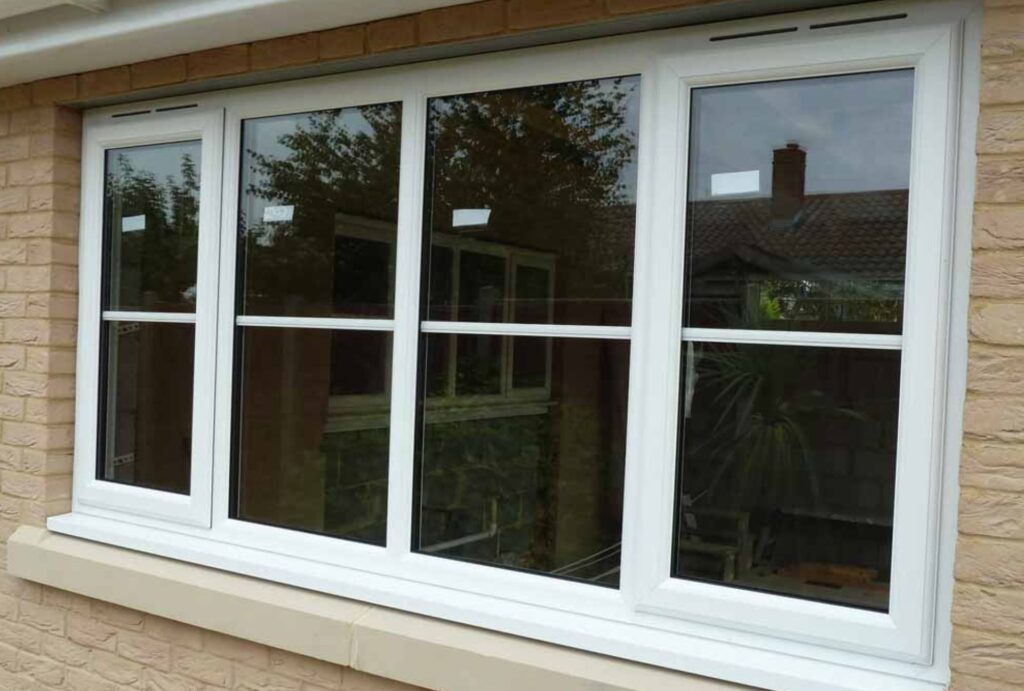
Real-Life Experiences: Is Retrofit Double Glazing Worth It?
When considering any home improvement, real-world experiences often provide the best insights. While retrofit double glazing promises better insulation, lower power bills, and reduced noise, how does it hold up in actual New Zealand homes? Let’s take a look at homeowner experiences and expert opinions to see if this investment truly delivers on its claims.
Case Study: Homeowner Experiences In NZ
Many New Zealand homeowners who have installed retrofit double glazing report noticeable improvements in comfort, energy efficiency, and noise reduction. Below are some real testimonials and insights from homeowners who have taken the plunge.
1. Lower Heating Bills And A Warmer Home
Emily and Mark, a couple from Christchurch, were struggling with cold indoor temperatures during winter. Their home, built in the 1970s, had single-glazed windows, causing heat to escape and resulting in high electricity bills. After retrofitting their windows with double glazing, they noticed an immediate difference.
“Before we got retrofit double glazing, we had to run our heat pump all day just to stay warm. After the installation, our home stays warm for longer, and we’ve seen at least a 30% reduction in our heating costs. It was definitely worth it!” – Emily, Christchurch
2. Noise Reduction In A Busy Neighborhood
David, who lives in central Auckland, decided to retrofit double glazing after struggling with street noise from passing cars and late-night foot traffic. Since installing acoustic-grade double glazing, he says his home is noticeably quieter, and he can finally get a good night’s sleep.
“We live near a main road, and traffic noise used to wake us up constantly. Now, with double glazing, we barely hear a thing. It has made a massive difference to our quality of life.” – David, Auckland
3. Reducing Condensation And Preventing Mold
Helen, a Wellington homeowner, had ongoing issues with window condensation, which led to mold growth and damp air inside her home. After retrofitting double glazing, she noticed a significant reduction in moisture buildup on her windows.
“Condensation was a real problem in winter. Our old windows would fog up every morning, and mold would form in the corners. Since getting retrofit double glazing, the condensation has nearly disappeared, and the air inside feels fresher.” – Helen, Wellington
These experiences show that retrofit double glazing lives up to its promises in real-world conditions, making homes warmer, quieter, and more energy-efficient.
Expert Opinions & Industry Insights
What do professionals in the building, energy, and insulation industries say about retrofit double glazing in New Zealand? Experts widely agree that it is one of the best ways to improve home energy efficiency without the high costs of full window replacement.
1. Builders Recommend It For Older Homes
According to James Fletcher, a Wellington-based builder, many older NZ homes were built with poor insulation and single-glazed windows, making them less energy efficient. He recommends retrofit double glazing as a cost-effective alternative to window replacement, especially for homeowners looking to retain the original character of their homes.
“Many Kiwi homes, particularly villas and bungalows, weren’t designed for modern insulation standards. Retrofitting double glazing allows homeowners to keep their original window frames while still improving thermal efficiency. It’s a great middle-ground solution.” – James Fletcher, Builder
2. Energy Consultants See Real Savings On Power Bills
Energy consultant Sarah Lawson, who specializes in home energy efficiency, confirms that double glazing significantly reduces heat loss, helping homeowners cut down on heating and cooling costs.
“Most heat loss in a home occurs through windows. Retrofit double glazing adds an extra layer of insulation, helping to keep the indoor temperature stable. Homeowners who invest in it typically see their power bills drop by 20-30%, depending on their home’s insulation and heating setup.” – Sarah Lawson, Energy Consultant
3. Insulation Experts Recommend Low-E Glass For Maximum Efficiency
Not all double glazing is created equal. Insulation experts emphasize that choosing the right type of glass is crucial for maximizing energy efficiency.
“If you’re investing in retrofit double glazing, go for Low-E glass with argon gas filling. It enhances insulation properties and provides even better thermal performance. The right glass choice can make a noticeable difference in comfort and energy savings.” – Ben Carter, Insulation Specialist
Based on real homeowner experiences and expert insights, retrofit double glazing is a smart investment for New Zealand homes. While the upfront cost may seem high, the long-term benefits—including lower energy bills, improved indoor comfort, reduced noise, and a healthier home environment—make it a worthwhile upgrade for many homeowners.
For those looking to improve their home’s insulation without replacing entire windows, retrofit double glazing is one of the best solutions available.
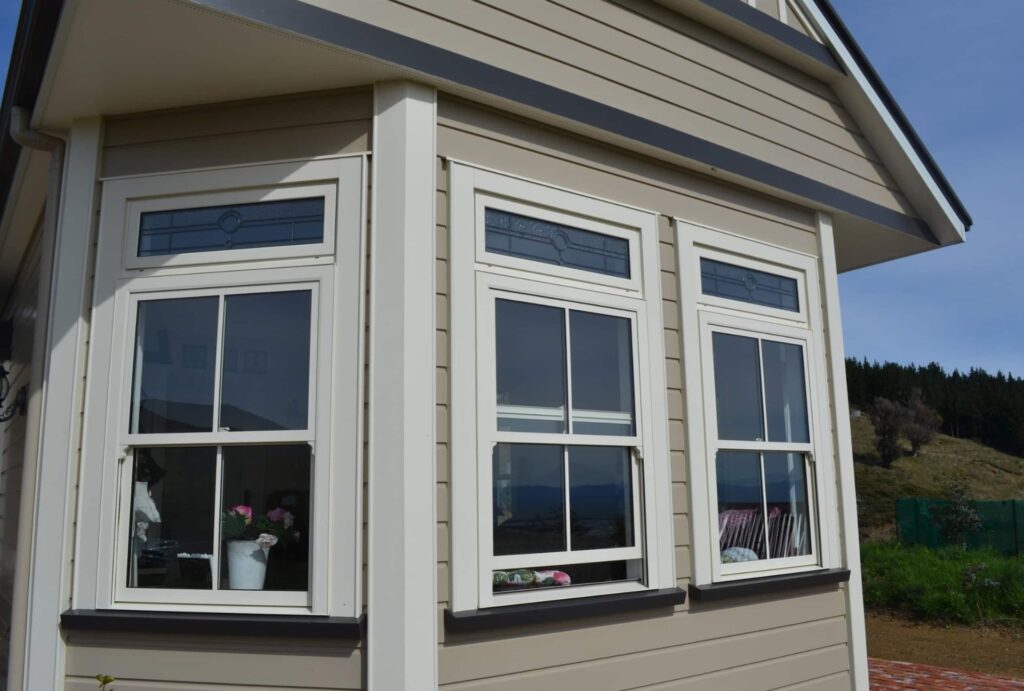
How To Choose The Right Retrofit Double Glazing Provider In NZ
Choosing the right retrofit double glazing provider in New Zealand is crucial to ensuring a high-quality installation that delivers better insulation, noise reduction, and energy efficiency. With multiple providers available, it’s important to assess factors like experience, glass quality, customer feedback, and warranty offerings before making a decision. Below, we’ll explore key considerations when selecting a supplier and highlight a few reputable companies in NZ.
What to Look for in a Supplier
Not all retrofit double glazing providers offer the same level of expertise, product quality, or service. Here are the essential factors to consider when choosing the right company for your home.
1. Experience & Expertise in Retrofit Glazing
- Look for a provider with years of experience specifically in retrofit double glazing, not just new window installations.
- Experienced professionals will assess your existing window frames to determine whether they’re suitable for retrofitting or if full replacements are necessary.
- Companies with a proven track record are less likely to make installation errors that could lead to seal failure, condensation issues, or heat loss.
2. Quality of Glass & Customization Options
- Low-E Glass: This is a high-performance option that reflects heat back into your home in winter and keeps it out during summer, improving thermal efficiency.
- Argon-Filled Units: Double glazing with argon gas between the panes improves insulation by reducing heat transfer, keeping your home warmer in winter and cooler in summer.
- Laminated or Acoustic Glass: If noise reduction is a priority, choose laminated glass, which significantly reduces outside noise—ideal for homes near busy roads or urban areas.
- UV Protection: Some glass options provide built-in UV filters, preventing furniture and flooring from fading due to sun exposure.
3. Customer Reviews & Reputation
- Always check online reviews and testimonials to see what past customers say about the company’s service, installation quality, and product durability.
- Look for reviews on Google, Facebook, TradeMe Services, and Houzz NZ to get a broad perspective.
- Ask the company if they can provide references or past project examples.
4. Warranty & After-Sales Support
- A reputable provider should offer a solid warranty on both the glass units and installation workmanship.
- Look for at least a 10-year warranty on the glass and a 5-year warranty on the installation.
- Ensure the company provides after-sales support in case of seal failures, condensation issues, or other unexpected problems.
Recommended NZ Companies
To help you get started, here are some well-reviewed retrofit double glazing providers in New Zealand. These companies have established reputations for quality work, customer satisfaction, and long-lasting results.
1. Metro Performance Glass
- One of NZ’s leading glass manufacturers and installers.
- Offers Low-E glass, argon gas filling, and acoustic glazing options.
- Strong presence across Auckland, Wellington, Christchurch, and other major cities.
2. Thermawood Retrofit Double Glazing
- Specializes in retrofit double glazing for timber window frames.
- Uses a patented dry glazing system, reducing moisture buildup and increasing longevity.
- Services available throughout Auckland, Waikato, Wellington, and Canterbury.
3. Eco Doors & Windows
- Focuses on eco-friendly, energy-efficient window solutions.
- Offers uPVC frames with high-performance double glazing.
- Known for excellent customer service and installation quality.
4. Retrofit Double Glazing NZ
- A nationwide company offering custom double-glazing solutions.
- Provides Low-E glass, argon-filled units, and laminated acoustic glass.
- Good reputation for affordability and professional service.
Selecting the right retrofit double glazing provider in NZ involves more than just comparing prices—it’s about choosing a company that offers high-quality materials, expert installation, and reliable aftercare. Take the time to research providers, read reviews, and ask for quotes to ensure you get the best value for your investment. With the right supplier, you can enjoy a warmer, quieter, and more energy-efficient home for years to come.
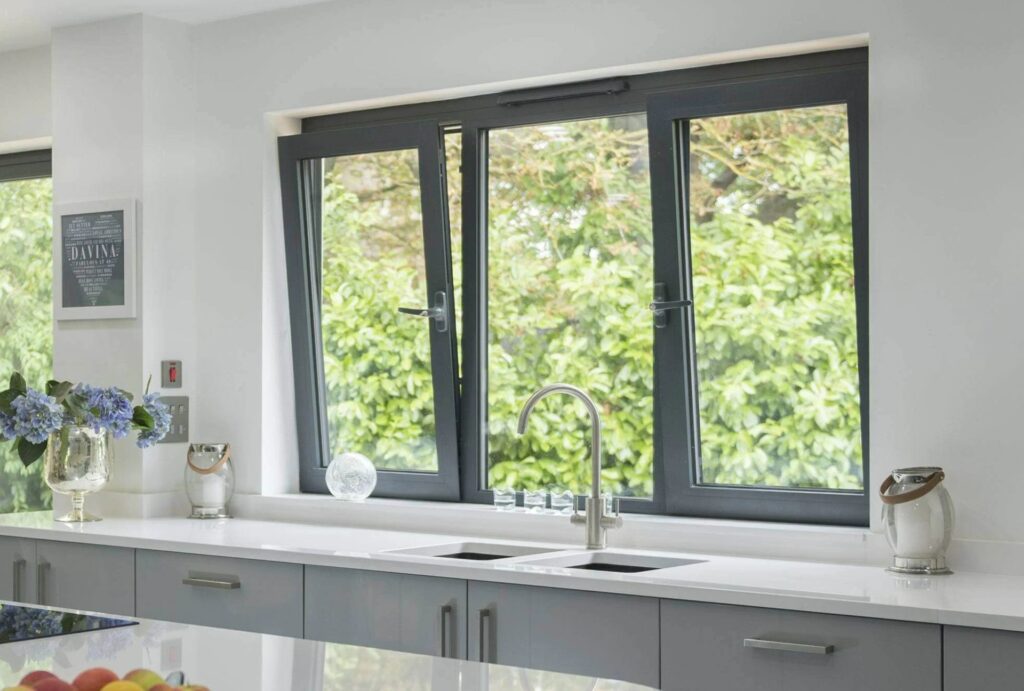
FAQs: About Is Retrofit Double Glazing Worth It In NZ
Conclusion
When weighing the pros and cons of retrofit double glazing in New Zealand, it’s clear that the benefits—such as improved insulation, lower energy bills, reduced condensation, and enhanced noise reduction—make it a worthwhile investment for many homeowners. While the upfront cost can vary depending on window size, frame material, and additional features, the long-term savings on heating and cooling costs, combined with the added comfort and property value, often justify the expense. However, the decision ultimately depends on your budget, home type, and personal priorities. If your existing window frames are in good condition, retrofitting is a cost-effective, eco-friendly alternative to full window replacement, allowing you to enjoy the advantages of double glazing without the hefty price tag. For most NZ homeowners, retrofit double glazing is absolutely worth it, delivering year-round comfort, energy efficiency, and a more sustainable home for the future.
Find A Professional Window Company Near You!
About the Author:
Mike Veail is a recognized digital marketing expert with over 6 years of experience in helping tradespeople and small businesses thrive online. A former quantity surveyor, Mike combines deep industry knowledge with hands-on expertise in SEO and Google Ads. His marketing strategies are tailored to the specific needs of the trades sector, helping businesses increase visibility and generate more leads through proven, ethical methods.
Mike has successfully partnered with numerous companies, establishing a track record of delivering measurable results. His work has been featured across various platforms that showcase his expertise in lead generation and online marketing for the trades sector.
Learn more about Mike's experience and services at https://theleadguy.online or follow him on social media:

